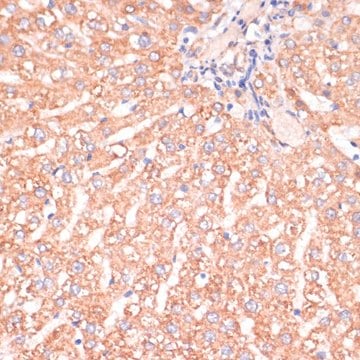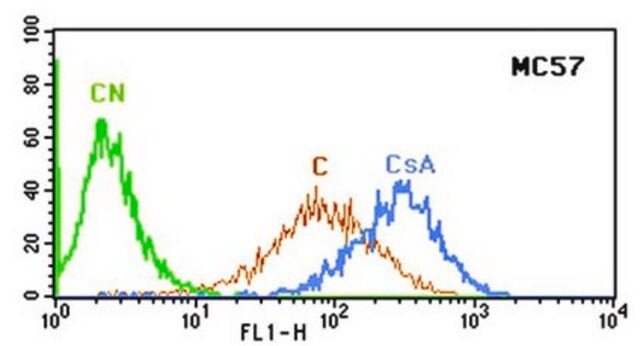MAB4334
Anti-MDR1 Antibody, conformational extracellular epitope, clone UIC2
clone UIC2, Chemicon®, from mouse
Synonim(y):
P-glycoprotein, CD243, p170, Pgp
About This Item
Polecane produkty
pochodzenie biologiczne
mouse
Poziom jakości
forma przeciwciała
purified immunoglobulin
rodzaj przeciwciała
primary antibodies
klon
UIC2, monoclonal
reaktywność gatunkowa
primate, human
spodziewany brak reakcji z
rat, mouse
producent / nazwa handlowa
Chemicon®
metody
flow cytometry: suitable
immunofluorescence: suitable
immunohistochemistry (formalin-fixed, paraffin-embedded sections): suitable
immunoprecipitation (IP): suitable
izotyp
IgG2aκ
numer dostępu NCBI
numer dostępu UniProt
Warunki transportu
wet ice
informacje o genach
human ... ABCB1(5243)
Powiązane kategorie
Opis ogólny
Specyficzność
Immunogen
Zastosowanie
Immunoprecipitation: 5 - 10 fold molar excess of UIC2 over the expected Pgp concentration; realistically, 1 - 5 μg per 1 mL of cell lysate.
Flow Cytometry (conventional and UIC2 Shift assay): depends highly on Pgp expression by target cells; usually, 0.1 μg/mL for low Pgp expressors and 1 μg/mL for high Pgp expressors.
Immunofluorescence: depends highly on Pgp expression by target cells; usually, 0.1 ug/ml for low Pgp expressors and 1 μg/mL for high Pgp expressors.
IHC on frozen and paraffin sections: 1 - 10 μg/mL.
Optimal working dilutions must be determined by end user.
Metabolism
Toxicology & Drug Resistance
Postać fizyczna
Przechowywanie i stabilność
Inne uwagi
Informacje prawne
Oświadczenie o zrzeczeniu się odpowiedzialności
Nie możesz znaleźć właściwego produktu?
Wypróbuj nasz Narzędzie selektora produktów.
polecane
Kod klasy składowania
10 - Combustible liquids
Klasa zagrożenia wodnego (WGK)
WGK 2
Temperatura zapłonu (°F)
Not applicable
Temperatura zapłonu (°C)
Not applicable
Certyfikaty analizy (CoA)
Poszukaj Certyfikaty analizy (CoA), wpisując numer partii/serii produktów. Numery serii i partii można znaleźć na etykiecie produktu po słowach „seria” lub „partia”.
Masz już ten produkt?
Dokumenty związane z niedawno zakupionymi produktami zostały zamieszczone w Bibliotece dokumentów.
Nasz zespół naukowców ma doświadczenie we wszystkich obszarach badań, w tym w naukach przyrodniczych, materiałoznawstwie, syntezie chemicznej, chromatografii, analityce i wielu innych dziedzinach.
Skontaktuj się z zespołem ds. pomocy technicznej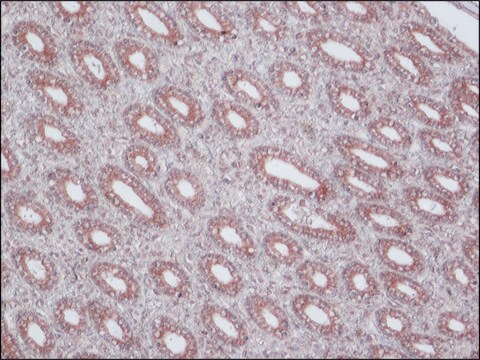
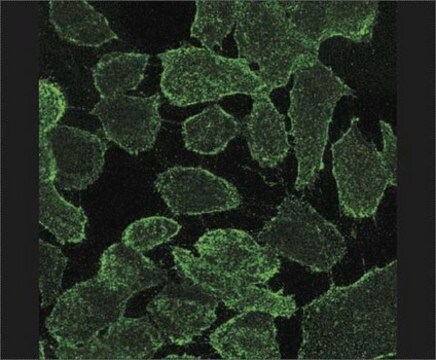

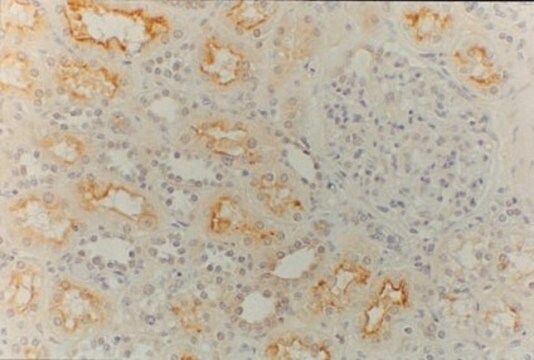

![Poly[4,5-difluoro-2,2-bis(trifluoromethyl)-1,3-dioxole-co-tetrafluoroethylene] dioxole 87 mol %](/deepweb/assets/sigmaaldrich/product/structures/951/320/21327fcd-4960-402d-8ae1-bf2e379cb2e2/640/21327fcd-4960-402d-8ae1-bf2e379cb2e2.png)
